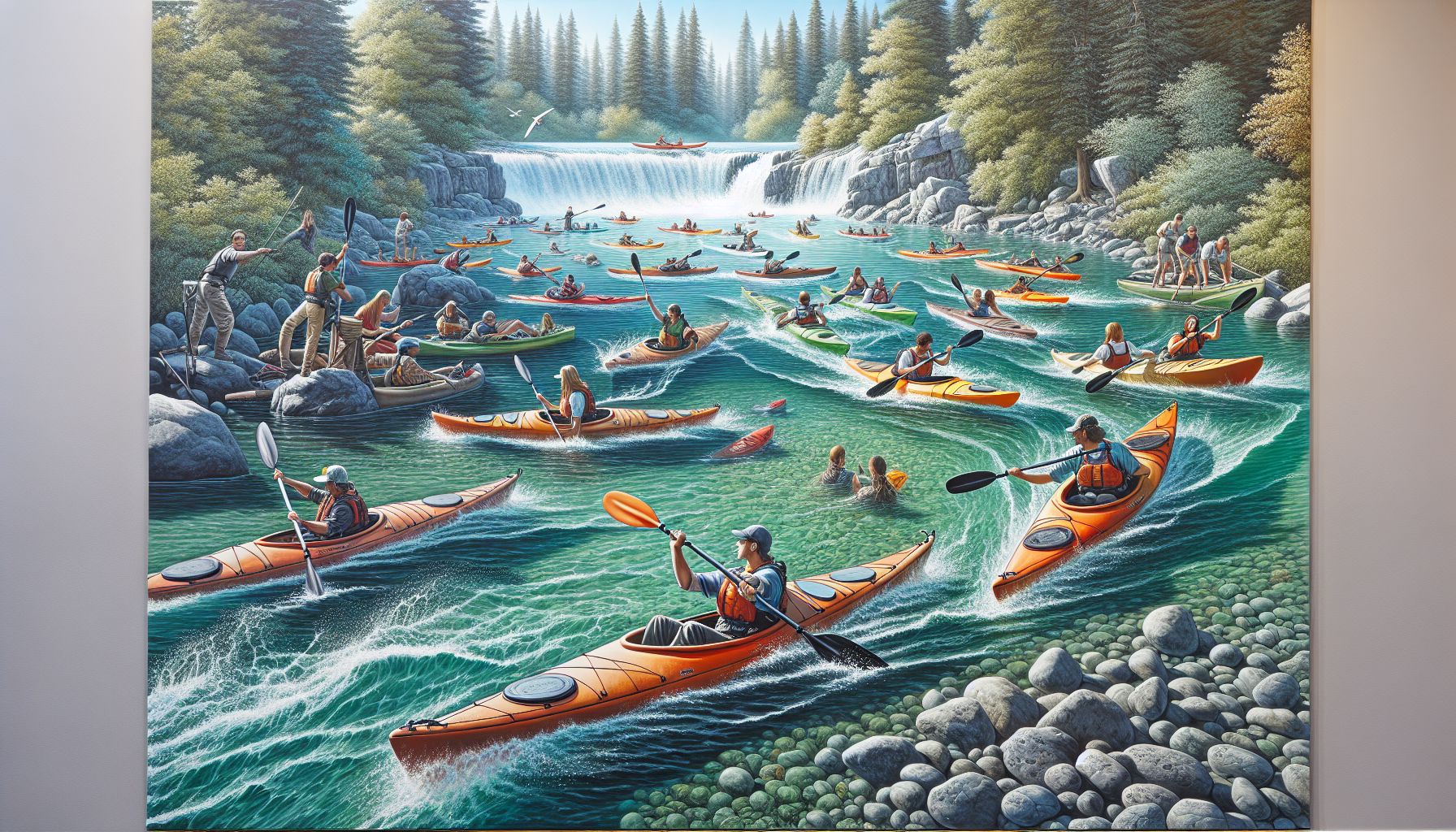Kayaking is a versatile and exhilarating way to explore vast stretches of water, from tranquil lakes to rough ocean waves. This guide is designed to dip into the art of kayaking, its various forms, essential gear, techniques, the health benefits, safety measures, and some of the best destinations for kayaking enthusiasts. By paddling through this comprehensive article, you will gain insights into the world of kayaking and be empowered to embark on your own water-bound adventures.
What is Kayaking?
Kayaking is a water sport that involves the use of a kayak—a small, narrow watercraft propelled by a double-bladed paddle. The kayaker sits facing forward with their legs extended beneath a deck, navigating through waterways by alternating paddle strokes on either side of the craft. It’s an activity that can be enjoyed as a leisurely pursuit or as a competitive sport, depending on the individual’s preferences and the environment they are kayaking in.
A Brief History of Kayaking
The origins of kayaking date back thousands of years to the Arctic regions, where the Inuit and Aleut tribes designed the first kayaks from animal skins stretched over wood or whalebone frames. These original kayaks were used primarily for hunting and fishing. Over the centuries, the craft evolved, and today, kayaks are made from various modern materials such as fiberglass, plastic, and even inflatable fabrics.
The Different Types of Kayaks
Before venturing into kayaking, it is essential to understand the different types of kayaks available:
1. Recreational Kayaks
These are typically wide and stable, perfect for beginners and leisure paddlers. They perform best on calm waters like lakes and slow-moving rivers.
2. Touring Kayaks
Also known as sea kayaks, these are longer and have more cargo space, designed for longer journeys on open waters, including coastal waters and large lakes.
3. Whitewater Kayaks
These are short and maneuverable, built to handle swift-moving, rocky watercourses. Whitewater kayaking is more intense and suited to adrenaline seekers.
4. Inflatable Kayaks
Great for casual use and travelers, they are easy to transport when deflated and can be prepared for use in a matter of minutes.
5. Tandem Kayaks
Built for two or more paddlers, tandem kayaks are a superb way to enjoy kayaking with a partner and share the paddling responsibilities.
6. Sit-on-top Kayaks
These kayaks lack an enclosed cockpit, making them easier to get on and off, ideal for warm environments and for those who prefer more freedom of movement.
7. Fishing Kayaks
These are equipped with features like rod holders, gear mounts, and sometimes even pedal-driven systems to allow for hands-free propulsion while fishing.
Essential Kayaking Gear
To ensure a safe and enjoyable kayaking experience, you need the right gear. Here’s a basic checklist:
- Kayak: Choose a model that’s appropriate for your intended use.
- Paddle: Select a paddle that matches your size and the type of kayaking you’ll be doing.
- Personal Flotation Device (PFD): A life vest is a must for safety.
- Helmet: Mandatory for whitewater kayaking and advisable for other forms of rough-water kayaking.
- Spray Skirt: Used to keep water out of the cockpit in sit-inside kayaks.
- Dry Bag: To keep personal items dry.
- Appropriate Clothing: Including wetsuits or drysuits in colder environments.
- Footwear: Such as water shoes or sandals designed to handle wet conditions.
Kayaking Techniques
Mastering fundamental paddling techniques is crucial for efficient maneuvering and safety:
1. Forward Stroke
The most basic kayak stroke, where the paddle is alternated from side to side to propel the kayak forward.
2. Reverse Stroke
Used to slow down or move the kayak backward.
3. Sweep Stroke
A wider stroke that turns the kayak. The bow sweep turns the kayak towards the paddle side, and the stern sweep turns it away.
4. Draw Stroke
Pulls the kayak sideways towards the paddle, useful for moving closer to a dock or another kayak.
5. Brace Stroke
A technique used for stabilizing the kayak to prevent capsizing.
Health Benefits of Kayaking
- Upper Body Conditioning: Regular paddling strengthens the arms, shoulders, chest, and upper back.
- Core Strengthening: Maintaining balance and maneuvering the kayak activates the core muscles.
- Aerobic Fitness: Kayaking provides a substantial cardiovascular workout.
- Mental Well-being: Being on the water and engaging in physical activity can reduce stress and enhance overall mood.
Safety Measures in Kayaking
Safety should be a top priority in any water sport:
- Always Wear a PFD: No matter your swimming skills, a life jacket is vital.
- Check Weather and Water Conditions: Before setting out, always ensure it’s safe to go kayaking.
- Know Your Limits: Kayak within your skill level and avoid taking unnecessary risks.
- Stay Hydrated and Protected: Drink plenty of water and use sunscreen.
Best Kayaking Destinations
Around the world, numerous destinations offer unforgettable kayaking experiences. Here are a few:
- Milford Sound, New Zealand: Paddle amidst towering cliffs and waterfalls.
- The Amazon Basin, South America: Explore the vast biodiverse ecosystem.
- The Norwegian Fjords, Norway: Witness the beauty of glaciers and remote villages.
- The Na Pali Coast, Hawaii: Navigate along coastal caves and hanging valleys.
- The Dalmatian Coast, Croatia: Discover ancient settlements and clear waters.
Final Thoughts
Kayaking is more than just a sport; it’s a way to connect with nature, challenge oneself, and find peace on the water. Whether you’re paddling through serene lakes, turbulent rapids, or along a beautiful coastline, each stroke brings you closer to the heart of this timeless pursuit.
Sources
To further explore the specifics mentioned in the guide, consider checking out these references:
- American Canoe Association. (n.d.). Find Instruction. Retrieved from https://www.americancanoe.org/
- British Canoeing. (n.d.). Go Paddling. Retrieved from https://gopaddling.info/
- Burch, D. (2010). Sea Kayaking Illustrated: A Visual Guide to Better Paddling. McGraw-Hill Education.
Remember, the water awaits, laden with endless possibilities—embrace the adventure of kayaking, and let the currents guide you to exhilarating experiences!
